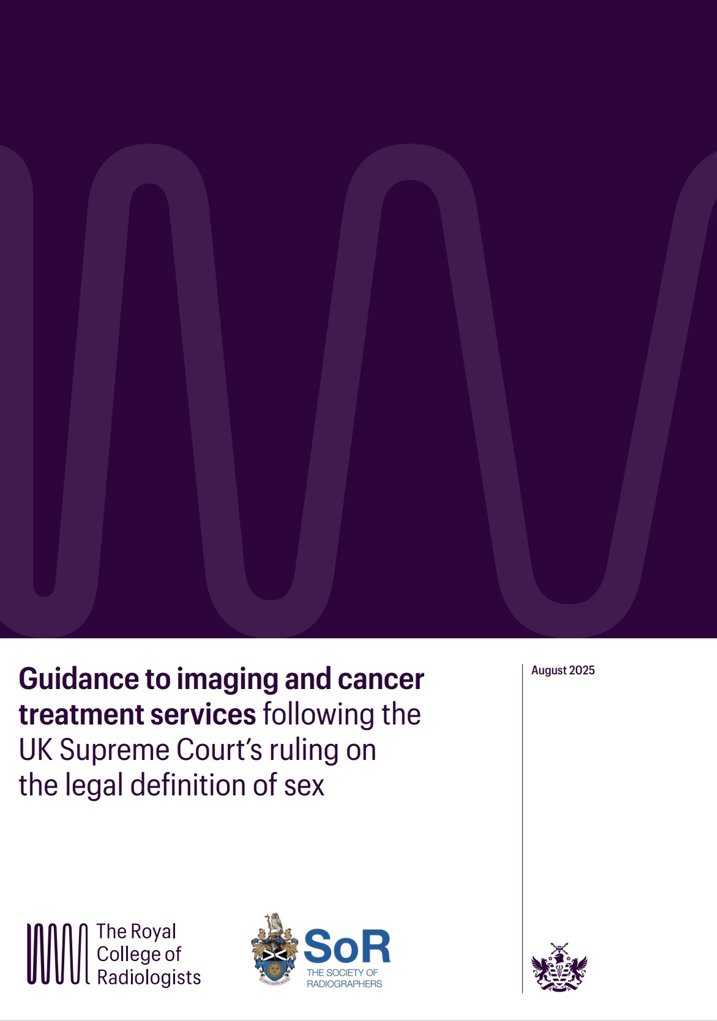Guidance to imaging and cancer treatment services following the UK Supreme Court's ruling on the legal definition of sex
Date: 2025
On 16 April 2025, the UK Supreme Court ruled that the terms ‘woman’, ‘man’ and ‘sex’ in the Equality Act 2010 refer to biological sex. We have joined forces with the Society of Radiographers (SoR) to issue joint guidance on the implications for service delivery, patient care, and workforce management in imaging and oncology services.
The Equality Act’s protections for transgender (trans), non-binary and gender-diverse people remain unchanged. However, the ruling clarifies that in certain situations – such as single-sex facilities or requests for same-sex care – ‘sex’ means the sex assigned at birth. This creates potential areas where patient rights and staff rights may appear to conflict, requiring careful, consistent handling.

Key implications
- Service access: Services must remain safe, respectful, accessible and inclusive for all patients, including trans patients.
- Single-sex spaces: Patients may legally request these, but they must be balanced with staff dignity, privacy, and equality rights.
- Same-sex care requests: May require a proportionate response; avoid automatic reassignment unless clinically necessary and agreed by staff.
- Questions about sex at birth: Only ask when essential, and handle with sensitivity.
- Protocols: Develop a clear organisational process for managing patient concerns about staff sex or gender identity.
- Staff support: Protect trans and gender-diverse staff from discrimination, ensure privacy, and provide emotional and professional support if concerns are raised.
- Risk management: Record decisions transparently, citing equality, legal and HR rationale to support accountability.
Recommended actions
- Review current service protocols and patient-facing information to ensure they reflect this legal clarification.
- Ensure staff understand both the legal rights of patients and the equality protections for colleagues.
- Brief frontline teams on how to respond to patient concerns or requests calmly and consistently.
- Liaise with HR, equality leads, or legal advisors when situations are complex or rights appear to conflict.
- Maintain visible commitments to professionalism, inclusion, and non-discrimination in all patient environments.
For further information or clarification on this guidance, please contact the Professional Practice team at [email protected]